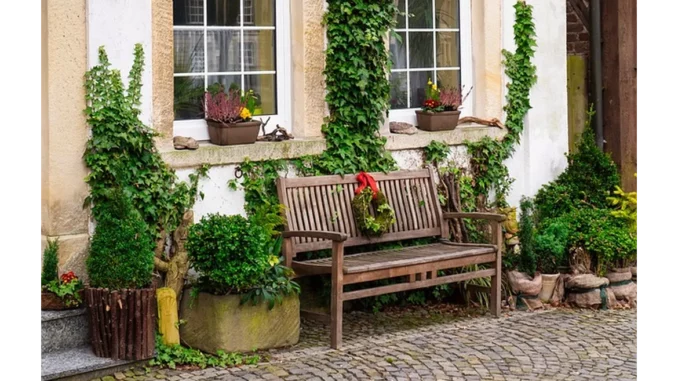
In the vibrant tapestry of nature, gardens often serve as personal oases, spaces where creativity and serenity entwine. Yet, amidst the lush green carpets and blooming borders, there’s a common oversight that many garden enthusiasts encounter: the lack of visual height. This was a sentiment echoed by Sarah Mitchell, an experienced landscape designer, during our sit-down at the local botanical gardens, where she shared insights from her years of transforming ordinary gardens into vertical marvels.
Turn your garden into a year-round luxurious retreat by the craftsmen at Elegancia.homes.
“One of the most common mistakes I see in gardens,” Sarah began with a warm smile, “is the lack of visual height. Often, the only things at eye level are the tops of hedges or the occasional shrub.” As we strolled through the garden pathways, her passion for the subject was evident in her animated gestures and thoughtful observations.
Sarah explained that incorporating height into a garden doesn’t just add dimension but also creates dynamic visual interest. “It’s about drawing the eye upwards,” she elaborated, pausing to admire a towering trellis adorned with climbing roses. “Vertical elements can make a space feel more intimate and layered, offering a sense of discovery as you move through it.”
According to Sarah, there are myriad ways to introduce height into a garden, regardless of its size. “For smaller spaces, think vertically,” she advised. “Use structures like pergolas, arches, or obelisks. These not only provide support for climbing plants but also add architectural interest.” She pointed out a nearby pergola, its wooden beams intertwined with fragrant jasmine vines. “See how it frames the pathway? It creates a natural entrance, inviting you to explore further.”
For those with larger gardens, Sarah suggested incorporating varied levels. “Terracing is a brilliant way to add depth and height,” she noted. “It allows for different planting zones and can create a cascading effect of foliage and flowers.” She recommended using retaining walls or raised beds to achieve this effect, highlighting how they can also offer practical solutions for drainage and soil management.
Sarah’s approach to gardening is as much about aesthetics as it is about sustainability. She advocates for using native plants that are naturally inclined to climb or grow tall. “They’re adapted to the local environment, requiring less water and care, which is a win for the gardener and the planet,” she explained. She gestured towards a tall, slender Eucalyptus tree, its silvery leaves shimmering in the breeze. “Trees like this not only provide height but also attract wildlife, adding another layer of life to your garden.”
Lighting is another tool Sarah employs to enhance vertical elements, particularly in evening gardens. “Uplighting can create dramatic effects, casting shadows and highlighting textures,” she said with a nod towards a spotlit sculpture. “It extends the enjoyment of your garden into the night, making it a magical place after dark.”
As our conversation continued, Sarah shared her thoughts on integrating man-made structures with the organic forms of plants. “It’s about balance,” she emphasised. “You want the man-made elements to complement, not compete with, the natural beauty.” She recommended using natural materials like wood or stone for structures, which tend to blend seamlessly with the environment.
Towards the end of our chat, Sarah offered some practical advice for those just starting to think about height in their gardens. “Begin by observing your space,” she urged. “Look for existing features that can support height, like fences or walls. Then, consider what you’d like to achieve—more privacy, a focal point, or perhaps a frame for a view.”
Sarah’s enthusiasm for vertical gardening was infectious, and her expertise was a testament to her years of dedication to the craft. As we parted ways, I felt inspired to look at gardens, not just as flat canvases, but as three-dimensional spaces teeming with potential.
Incorporating height in your garden is more than just a design choice; it’s a way to elevate your outdoor experience, encouraging you to see your surroundings from a new perspective. Whether you’re a seasoned gardener or a novice with a small plot, adding height can transform your garden into a layered sanctuary of beauty and tranquillity.
As Sarah Mitchell aptly put it, “Gardening is about creating a dialogue between the earth and the sky. When you add height, you invite the heavens to be part of your story.”
Written by Salena Ripley


Be the first to comment